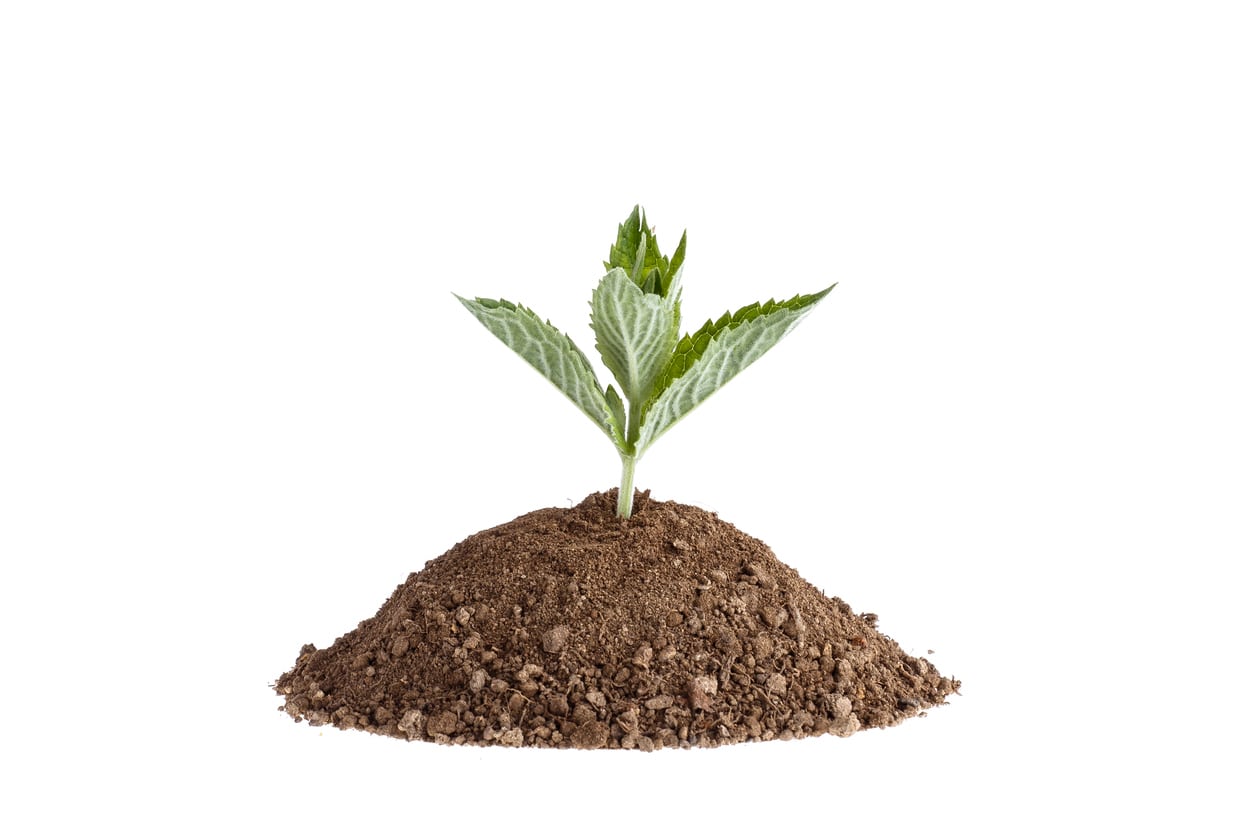Growing Mint From Seed: Learn How To Plant Mint Seeds


You don't have to be a fan of lamb or mojitos to love the scent and flavor of mint. Having it nearby in the garden attracts bees and allows you to access that zippy aroma and refreshing flavor for teas, seasonings, pest repellent, and even household deodorizing. Growing mint from seed is easy and the little plants really take off once installed in a garden bed. Here are a few tips on starting mint seeds so you can enjoy these fragrant herbs in your landscape.
When to Plant Mint Seeds
Mint is a culinary herb of the Mediterranean and Asian regions. It is featured prominently in many recipes from savory to sweet and even in beverages. It is a hardy perennial herb and grows quickly, often becoming invasive. There are over 3,500 varieties with special characteristics which makes variety selection important. Once you have your cultivar, sowing mint seeds at the right time will ensure a big, beautiful crop of this versatile herb. If you wish to transplant the seedlings outside in spring once soil has warmed, the seeds need to be planted in late winter. In warmer regions, they can be directly sown into prepared garden soil in mid-spring. However, because this is a hardy perennial, they can also be started any time up until two months before the first expected frost. You can also grow mint in containers and start indoors at any time. The key to growing mint from seed is well-draining soil that mimics the natural soils of the plant's native region. Mint prefers slightly acidic, moist, rich soil.
How to Plant Mint Seeds
You can start sowing mint seed in containers or flats or in prepared garden soil. Sow seeds ¼ inch (6 mm.) deep. The seeds are tiny, but you can space them with a seed injector or simply thin the seedlings once germinated. Expect germination in 10 to 15 days. Keep flats in a warm location and soil lightly moist but not soggy. A cover over the flat can speed germination. Remove it once you see sprouts. If starting mint seeds outdoors, sow seeds on the surface of prepared soil and cover with a light layer of vermiculite. Once seedlings have two sets of true leaves, harden them off and plant them into beds or outdoor containers. Once the little plants are ready to transplant, take containers outdoors and let them acclimate for a week to outdoor conditions before moving them. Water new plants regularly. Ideally, mint needs 1 to 2 inches (2.5-5 cm.) of water per week during the growing season. Use drip irrigation or water in the morning to allow leaves to dry. Overly wet leaves may lead to fungal diseases. Apply fertilizer in early spring. A balanced plant food with a 16-16-16 ratio is ideal. Do not over fertilize, as it can diminish oil production and lead to disease issues. Mint can be aggressive so it may be best to plant it in containers or in an out of the way area of the garden. Alternatively, you can let it ramble around where human contact will release the oils and perfume the area with a heavenly scent.
Gardening tips, videos, info and more delivered right to your inbox!
Sign up for the Gardening Know How newsletter today and receive a free copy of our e-book "How to Grow Delicious Tomatoes".

Bonnie Grant is a professional landscaper with a Certification in Urban Gardening. She has been gardening and writing for 15 years. A former professional chef, she has a passion for edible landscaping.
-
 Looking For Plants To Give You The Soft And Fuzzies? Try These 5 Fuzzy Leaf Plant Options
Looking For Plants To Give You The Soft And Fuzzies? Try These 5 Fuzzy Leaf Plant OptionsLovers of texture, drama, silver foliage and tactile plants will adore these special sensory garden additions. These fuzzy leaf plant options will leave you all aglow
By Susan Albert
-
 Get Ready For A Summer Of Hummers! Grow These Full Sun Hummingbird Plants and Flowers
Get Ready For A Summer Of Hummers! Grow These Full Sun Hummingbird Plants and FlowersIf you’re lucky enough to enjoy a sunny backyard, make sure you are maxing out on your pollinator opportunities and grow these full sun hummingbird plants and flowers
By Tonya Barnett